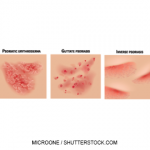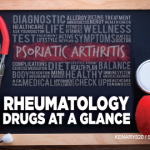Patients received certolizumab pegol treatment with doses of 400 mg at Weeks 0, 2 and 4, and then received 200 mg certolizumab pegol every two weeks thereafter, or they received placebo for the first two weeks, and then they received certolizumab pegol 400 mg/200 mg regimen through Week 16.
MRI was obtained at baseline, then at Weeks 1, 2, 4, 8 and 16. Most patients were women (75%) with a mean age of 50 and a mean disease duration of more than five years. All patients had active disease despite the use of nonbiologic disease-modifying antirheumatic drugs (DMARDs). They could have used at least one biologic DMARD.
The mean change from baseline in synovitis score at Week 16 was greater for the certolizumab-treated group than for the group that initially received placebo. This change was not statistically significant. MRI comparisons from baseline to Week 8 numerically decreased for osteitis or synovitis, but this was also not statistically significant. Throughout the study, bone erosion scores did not change. At Week 16, the overall ACR 20 response was 86%. Utilizing EULAR criteria, 95% of patients had a moderate or good response. Additionally, the Disease Activity Score in 28 joints (DAS28) decreased from a median of 5.2 at baseline to 2.5. In the active treated patients, there was evidence of clinical benefit as early as Week 1. Adverse drug reactions were mild to moderate in intensity, and the most common reactions were herpes virus and upper respiratory tract infections. No serious infections occurred. This study helps narrow down the potential time frames of obtaining MRIs to assess early response to treatment in RA patients.
Michele B. Kaufman, PharmD, CGP, RPh, is a freelance medical writer based in New York City and a pharmacist at New York Presbyterian Lower Manhattan Hospital.
References
- Hospira’s Inflectra (infliximab) now available in Canada. Hospira Inc. 2015 March 30.
- FDA approves first biosimilar product Zarxio. FDA News Release. 2015 March 6.
- Bankhead C. IL-17 inhibitor clears psoriasis more often—Brodalumab twice as likely to clear all lesions as ustekinumab. MedPage Today. 2015 March 22.
- Østergaard M, Jacobsson LTH, Schaufelberger C, et al. MRI assessment of early response to certolizumab pegol in rheumatoid arthritis: A randomised, double-blind, placebo-controlled phase IIIb study applying MRI at weeks 0, 1, 2, 4, 8, and 16. Ann Rheum Dis. 2014 Dec 15. pii: annrheumdis-2014-206359. doi: 10.1136/annrheumdis-2014-206359. [Epub ahead of print]



